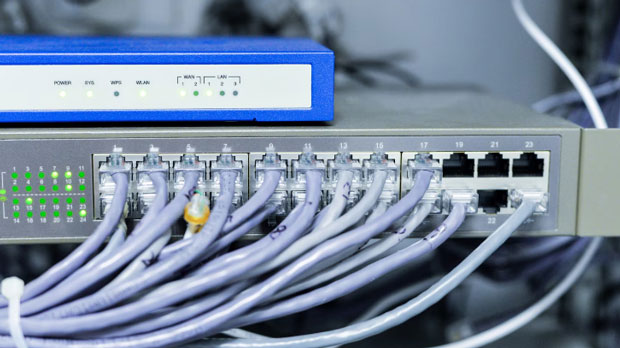In the digital age, the need for enhanced online security, privacy, and access to restricted content has made the use of proxy servers a common practice. Among the various types of proxies, sock s5 proxies have gained significant attention due to their unique capabilities and robust security features. PYPROXY, when combined with the best socks5 proxy servers, offers numerous advantages, including improved browsing speed, better anonymity, and access to geo-blocked content. In this article, we will explore in-depth the key benefits of using PyProxy with the best socks5 proxy server and how it can enhance your online experience. 1. Enhanced Security and PrivacyOne of the primary reasons for using a SOCKS5 proxy server is the level of security and privacy it offers. PyProxy, combined with a high-quality SOCKS5 proxy, allows users to conceal their real IP addresses, making it incredibly difficult for malicious entities to trace their online activities. By routing internet traffic through the proxy server, PyProxy ensures that sensitive data is not exposed to potential hackers, ensuring safer browsing experiences.Moreover, SOCKS5 proxies provide greater flexibility in terms of handling traffic. Unlike HTTP proxies, SOCKS5 can handle all types of internet traffic, such as emails, torrents, and VoIP calls. This makes it a more versatile solution for users who require comprehensive privacy protection for various online activities.2. Improved Speed and ReliabilityWhen it comes to proxy servers, speed and reliability are crucial factors. SOCKS5 proxies are known for their high performance and minimal latency. PyProxy, when paired with the best SOCKS5 servers, ensures that users can enjoy fast browsing and secure connections without noticeable delays. Unlike other proxy types that may slow down the connection due to the overhead of encryption and other processes, SOCKS5 proxies offer a smoother and faster internet experience.This increased speed is particularly valuable for users engaged in activities such as streaming, online gaming, or torrenting, where performance and latency are critical. By leveraging the power of SOCKS5 proxies, PyProxy can optimize the overall browsing experience, reducing buffering times and increasing data transfer rates.3. Access to Geo-Blocked ContentA major benefit of using a SOCKS5 proxy server with PyProxy is the ability to access geo-restricted content. Many online services, such as streaming platforms, block content based on geographic locations. By connecting to a SOCKS5 proxy located in a region where the desired content is available, users can bypass these geographical restrictions and access a wider range of media.For example, users can access content from streaming services like video libraries, music platforms, or social media platforms that may be restricted in certain countries. This makes SOCKS5 proxies an excellent tool for unlocking the full potential of the internet by allowing users to view content that would otherwise be unavailable in their location.4. Bypassing Internet CensorshipIn some regions, internet censorship and government surveillance are a significant concern for online users. Governments often impose strict regulations on the types of content users can access, monitor their internet activities, and block access to certain websites. Using a SOCKS5 proxy with PyProxy provides a robust solution for bypassing these censorship measures.By connecting to a SOCKS5 proxy server located in a country with fewer restrictions, users can freely access websites, social media platforms, and services that might otherwise be blocked. This allows individuals in countries with strict censorship laws to maintain their freedom of expression and access to global information.5. Anonymity and Protection Against TrackingPrivacy is one of the most important aspects of online browsing, and using the best SOCKS5 proxy server with PyProxy ensures that users remain anonymous while navigating the internet. With SOCKS5, users can effectively mask their real IP address, making it harder for third parties to track their online activities. This is especially important for individuals who are concerned about online tracking, profiling, or surveillance.For example, online marketers, advertisers, and hackers often use IP addresses to track user behavior across the web. By using PyProxy with a SOCKS5 proxy, individuals can avoid targeted ads, reduce the risk of data breaches, and minimize the exposure of personal information.6. Flexible and Customizable ConfigurationAnother significant advantage of using PyProxy with the best SOCKS5 proxy server is the level of flexibility it offers. PyProxy provides users with the ability to configure and customize their proxy settings according to their specific needs. Whether you are a casual user looking for enhanced privacy or a professional seeking advanced features like load balancing, PyProxy allows users to fine-tune the proxy server setup.For instance, users can adjust settings related to the number of simultaneous connections, connection timeouts, and more. This flexibility ensures that the proxy server is tailored to the specific requirements of the user, providing a more efficient and personalized experience.7. Compatibility with Multiple ApplicationsSOCKS5 proxies are known for their versatility and can be used with a wide range of applications and services. Whether you're browsing the web, using torrents, playing online games, or engaging in voice communication, SOCKS5 proxies offer seamless compatibility across various platforms. PyProxy, when used with the best SOCKS5 servers, ensures that users can enjoy these benefits without experiencing compatibility issues.This makes SOCKS5 proxies an ideal solution for individuals who engage in diverse online activities and need a reliable proxy service that works with multiple applications simultaneously. PyProxy ensures smooth integration with various protocols and services, enhancing the overall user experience.8. Better Resource Management for BusinessesFor businesses that rely on the internet for operations, using SOCKS5 proxies with PyProxy offers a range of benefits. By managing internet traffic through proxy servers, businesses can ensure better resource allocation, reduce network congestion, and maintain optimal bandwidth usage. SOCKS5 proxies can help companies optimize their internet infrastructure, ensuring smooth and uninterrupted access to critical services.Moreover, businesses that handle sensitive data, such as customer information, can use SOCKS5 proxies to ensure secure communication and protect their assets from cyber threats. This is particularly crucial for businesses operating in sectors where data security and privacy are top priorities.Conclusion: Why Choose PyProxy with the Best SOCKS5 Proxy Server?In summary, combining PyProxy with the best SOCKS5 proxy server offers numerous advantages for both individuals and businesses. From enhanced security and privacy to improved speed, access to geo-blocked content, and bypassing internet censorship, SOCKS5 proxies provide a reliable and versatile solution for a wide range of online activities. Furthermore, the flexibility and compatibility offered by PyProxy make it an ideal choice for users who require customization and support for multiple applications.By leveraging the power of SOCKS5 proxies and PyProxy, users can enjoy a safer, faster, and more efficient online experience while maintaining their anonymity and protecting their data from unwanted surveillance.
Sep 19, 2025



































































